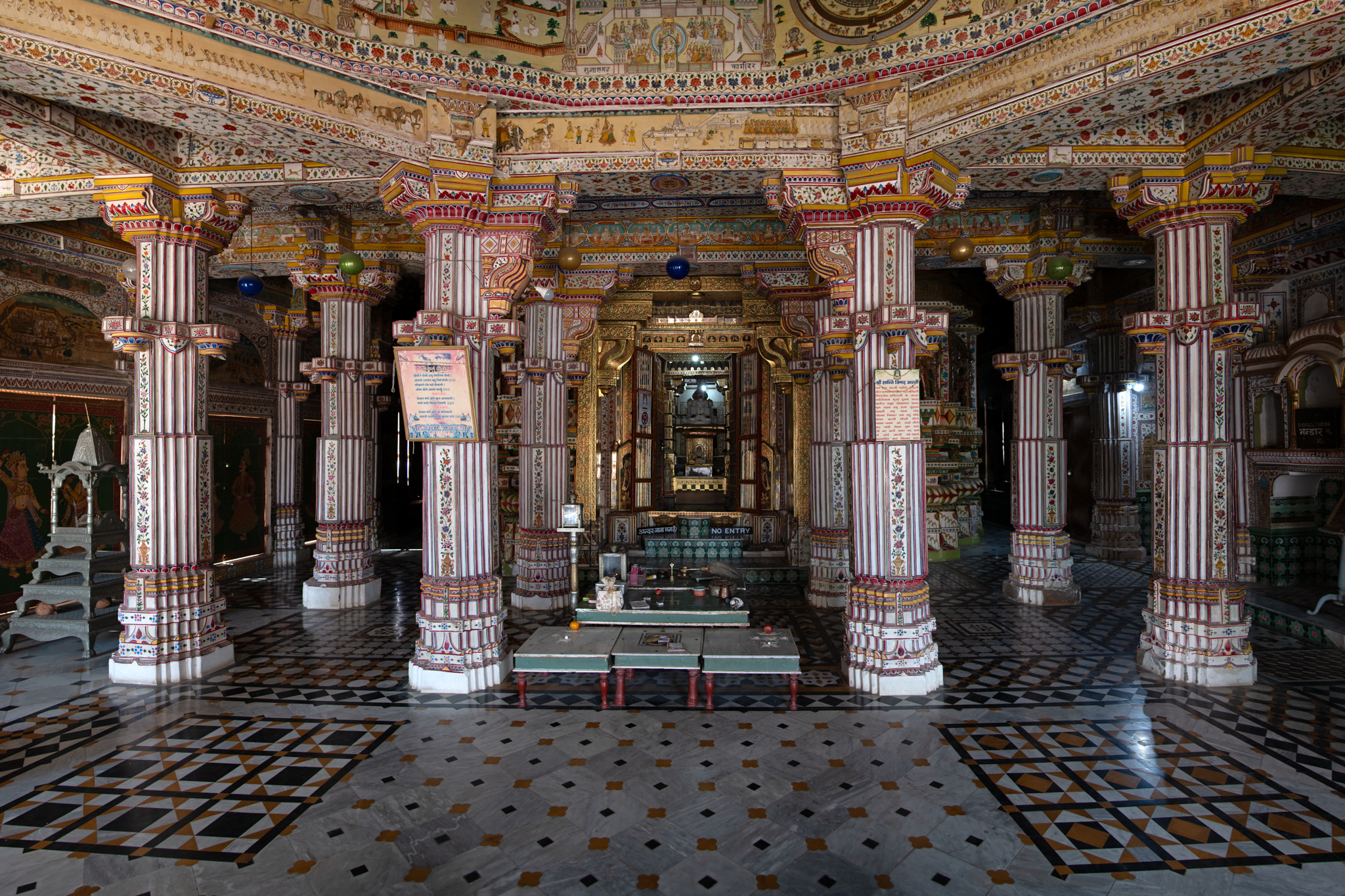Seth Bhandasar Jain Temple
Bikaner, Rajasthan
By Swapna Joshi
The Seth Bhandasar Jain Temple is situated in Bikaner, Rajasthan, within the older part of the walled city. It resides amidst one of the busiest areas of the city, Bada Bazaar, adjacent to another famous temple of Bikaner, the Lakshmi Nath Temple. Bhandasar Temple is dedicated to the fifth tirthankara, Sumatinatha, and is affiliated with the Shvetambara Jain tradition.
Among locals, Seth Bhandasar Jain Temple is famous for two things: First, it predates Rao Bika's establishment of Bikaner in the 15th century and second, the temple’s construction involved the use of pure ghee in its foundation instead of conventional cementing material. Both these aspects serve to underscore the temple’s antiquity, opulence, patronage, religious traditions and heritage value. An inscription above a pillar in the temple’s antechamber dates its construction to the 16th century CE, during the reign of Rao Lunkaran. Although the same inscription is also etched above the entrance gateway of the temple, its details have not surfaced in existing writings about the temple.
This module delves into the exploration of the Bhandasar Temple as a living Jain shrine, whose history is layered with reconstructions. The overview article within the module sheds light on all the varied aspects of the temple complex, which consists of the Bhandasar Temple, a subsidiary Adinath Temple, and an enclosure wall surrounding these two structures. This article meticulously covers the art and architecture of the temple. Another article delves into the themes depicted in the paintings found all over the interiors of the temple. Through this, the article also briefly spans over Bikaneri style of paintings, an offshoot of the Rajput school. Additionally, the photoessay emphasizes the paintings in the dome of the Bhandasar Temple, particularly focusing on the circular set of paintings belonging to the miracles of the Dada Gurus of the Shvetambara sect. Here, the effort is also to touch upon the significance of the Dada Guru belief in Rajasthan. Other paintings within the dome encompass depictions of Jain Tirthankaras, sacred symbols, and significant rituals of the Jain traditions. The module also comprises an image gallery and architectural drawing.
